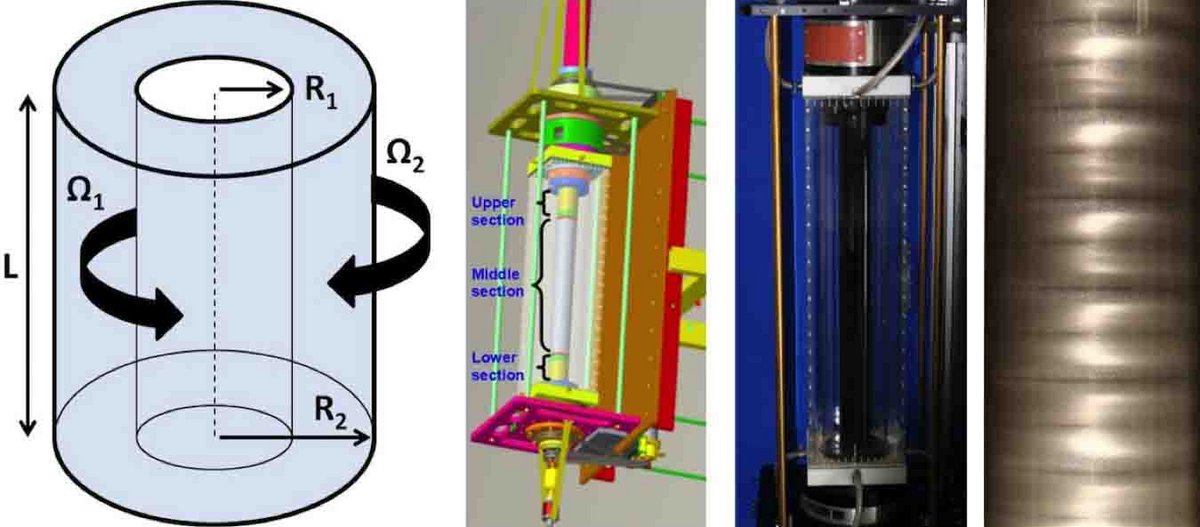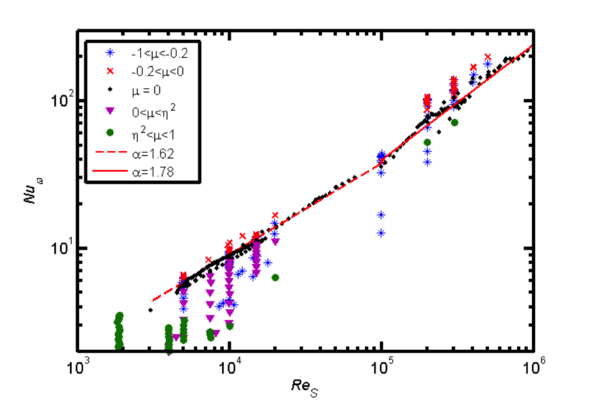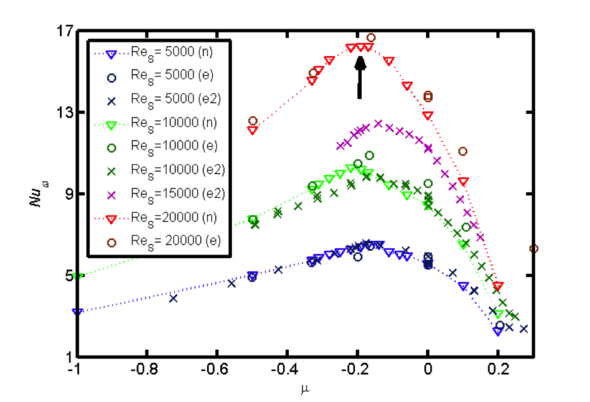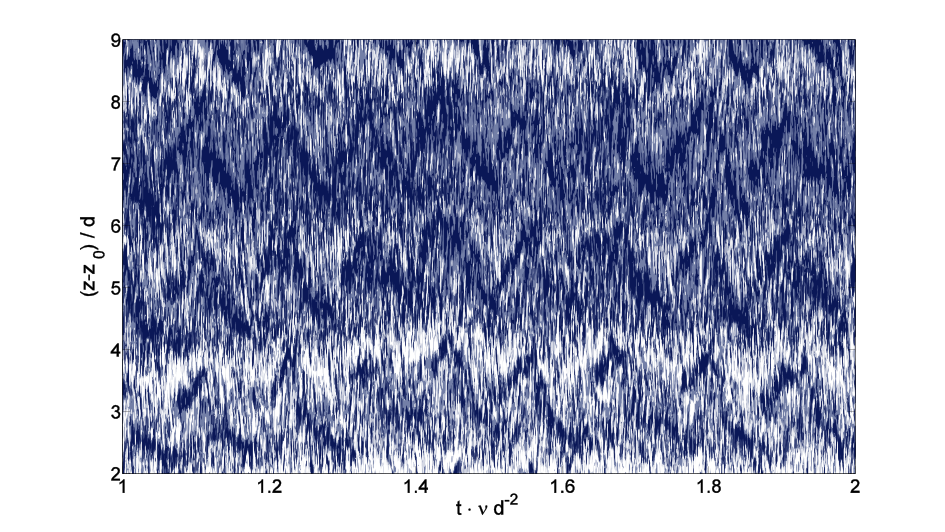Fluid Mechanics
Transport processes in the Turbulent Taylor-Couette Cottbus (T2C2)
Rotating flows are of fundamental interest in many fields of science and technology. From large scales - as astrophysical accretion disks, star formation and geophysical fluid flows - further on mesoscales - such as turbines, compressors, medical devices - to small scales - as journal bearings - a fluid with rotation addresses many questions. For this approach one looks into the flow between two rotating concentric cylinders, the Taylor-Couette system.
In the DFG funded research unit FOR 1182 we investigate the transport process of angular motion in the cylinder gap. For this purpose the inner cylinder of the T2C2 - experiment (Fig. 1) was built with a torque sensor unit inside. Due to this we are able to measure precisely the torque acting at the rotating cylinder wall. The scaling of this quantity is compared to other transport quantities in Fluid Mechanics (i.e. heat flux in Rayleigh-Bénard convection).

The dependencies of the quasi-Nusselt number, which is the torque devided by the torque of a laminar flow for the same angular velocity, was analysed by the two input parameters shear Reynolds number
\[Re_S = {{2 R_1 R_2} \over {R_2 + R_1}} \cdot {{(R_2-R_1) ( \Omega_2 - \Omega_1)} \over {\nu}}\]
and the ratio of angular velocities
\[\mu = {{\omega_2} \over {\omega_1}}\]
Figure 2 shows the results of the quasi-Nusselt number. It increseases with the shear Reynolds number with a growing exponent [1].
More recently it has been observed that for slight counter rotation at the same shear Reynolds numbers a higher torque is acting to the wall. This is caused by a larger convective transport of angular motion. A comparison to numerical results by H. Brauckmann shows good agreement (Fig. 2 right).
Also for higher Reynolds numbers this behaviour for counter rotation is observed and discussed in [1]. More measurements for large shear Reynolds numbers show in a compensated plot, that the behaviour is independent of the shear Reynolds number beyond certain Reynolds number.
Visualisations have been done using Kaliroscope particles in silicone oil (see Fig. 2). Here, structures can be identified and observed. For the highest torque at counter rotation an axial dependent flow arises on top of the Taylor-Vortices. In Fig. 3 the axial-temporal behaviour of these structures can be seen. The results are discussed in [2].
Bibliography:
- S. Merbold, H.J. Brauckmann, C. Egbers, Torque measurements and numerical determination in differentially rotating wide gap Taylor-Couette flo, Phys. Rev. E 87, 023014, 2013
- S. Merbold, A. Froitzheim, C. Egbers, Flow pattern and angular motion transport in a wide gap Taylor-Couette flow, TU Dresden, Strömungstechnische Tagung 2014, Schriftenreihe aus dem Institut für Strömungsmechanik Band 10, 2014



